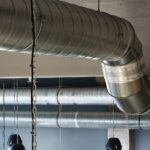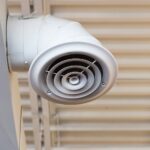Plumbing systems serve as the arteries of your home, maintaining smooth water flow and essential daily functions. Yet, even minor leaks can disrupt this harmony, potentially escalating into costly repairs if left unchecked. Embrace the power of water line pressure testing—a proactive approach that empowers you to catch leaks early and maintain your system’s health with minimal expense.
- Discover the fundamentals of water line pressure testing and its role in efficient DIY leak detection.
- Follow our step-by-step guide to perform water line pressure testing with precision and confidence.
- Explore DIY leak detection methods that enhance your testing efforts and ensure comprehensive coverage.
By mastering these techniques, you’ll not only safeguard your plumbing system but also extend its lifespan and functionality. Dive into the article to equip yourself with knowledge that transforms potential issues into manageable tasks—a true investment in your home’s future. Share your experiences with these methods in the comments, and let’s create a community of shared solutions and support.
Understanding Water Line Pressure Testing and DIY Leak Detection Methods
Water line pressure testing plays a critical role in maintaining the integrity of your plumbing system. It involves assessing the water pressure within your pipes to identify hidden leaks and potential weaknesses. Understanding the dynamics of water pressure is essential for both diagnosing problems and ensuring your system operates efficiently.
DIY leak detection can significantly minimize future repair costs by addressing issues early. Common signs of leakage include unexplained water spots, increased water bills, and dampness in areas without an apparent source. By mastering these indicators, you can react promptly to any anomalies.
Using DIY methods for leak detection empowers homeowners to manage their plumbing systems proactively. With a solid grasp of how water line pressure testing works, you’ll be better equipped to maintain your home’s plumbing health, saving time and resources.
Step-by-Step Guide to DIY Water Line Pressure Testing
Lear how to perform water line pressure testing with confidence using this step-by-step guide. Start by collecting essential tools such as a pressure gauge, wrench, and thread seal tape. Safety is paramount, so ensure you understand the process before beginning.
Begin by shutting off all water sources connected to your plumbing system. Attach the pressure gauge to an outdoor faucet or hose bib, ensuring a secure fit with thread seal tape to prevent leaks during testing. Open the faucet fully and observe the gauge, noting the pressure reading.
Typical household water pressure ranges from 40 to 60 psi. If the reading deviates significantly, it may indicate a problem within the system. Repeating the test at various points throughout has better insights into pressure fluctuations.
Regularly performing these tests not only helps in detecting leaks but also maintains optimal water pressure levels, prolonging your plumbing system’s efficiency and lifespan.
Common DIY Leak Detection Methods and Their Impact on Water Line Pressure Testing
Regular water line maintenance is crucial for the integrity of your plumbing system. Employing effective DIY leak detection methods can help you identify issues early, thus preventing significant damage and costly repairs. Here, we explore several popular methods to facilitate comprehensive water line pressure testing.
Visual Inspections are a fundamental step in any leak detection process. By routinely inspecting areas around water lines, you can catch signs of leakage such as damp spots, mold, or discoloration on walls and ceilings. These visible indicators provide valuable hints that a more detailed pressure test might be needed to uncover underlying problems.
A Pressure Gauge is an invaluable tool for detecting water line leaks. By attaching a gauge to an outdoor hose bib or faucet, you can monitor changes in water pressure over time. Significant drops in pressure can indicate potential leaks within the system. Performing this test regularly helps ensure your plumbing maintains optimal pressure, which is key to efficient water usage and prevention of leaks.
Using Food Coloring in toilet tanks is another simple DIY method. Adding a few drops of food coloring to the tank can reveal leaks in this often-overlooked area. If the color appears in the bowl without flushing, it is a sign of a leak needing attention. This method specifically targets toilet leaks but can inform broader pressure testing needs.
Sound Detection involves listening for uncommon sounds in places where pipes run. Hissing or gurgling sounds can signal an issue in water lines, prompting a thorough investigation using pressure testing. Utilizing simple methods like a stethoscope or even your ear can yield surprising results.
Each of these DIY methods plays a critical role in water line pressure testing. By addressing potential leaks early, you can maintain water efficiency and preserve the lifespan of your plumbing system. Regularly applying these techniques will not only catch issues quickly but also enhance your overall home maintenance routine.
Frequently Asked Questions About Water Line Pressure Testing
What is water line pressure testing?
Water line pressure testing is a procedure used to check for leaks by assessing the pressure levels in your plumbing system.
Why is water line pressure testing important?
It helps identify leaks early, preventing water damage and reducing future repair costs.
What tools do I need for DIY water line pressure testing?
You’ll need a pressure gauge, a wrench, and Teflon tape to perform the test accurately.
How can visual inspections help in leak detection?
They can reveal obvious signs of leakage such as water stains, damp spots, or mold growth.
Can I perform water line pressure testing without professional help?
Yes, with the right tools and guidance, you can conduct effective testing on your own.





